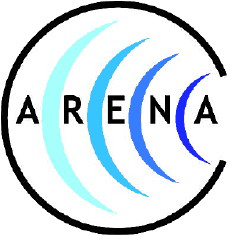Prof.
Nikolay Budnev
(Irkutsk State University)
02/07/2010 09:00
oral presentation
We report the present status and perspectives of the feasibility study to detect cosmic neutrinos acoustically in Lake Baikal. The results of background studies are presented. It was shown that most of the detected neutrino-like pulses come from the lake surface. This fact has been used in project of an acoustic prototype detector that consists of compact modules with 4-channel antennas...
Prof.
Sean Danaher
(Northumbria University)
02/07/2010 09:30
oral presentation
This will present an overview of the current state of the ACoRNE collabaration, including upper limits on neutrino fluxes and recent work on primordial black hole detection.
Dr
Robert Lahmann
(University of Erlangen)
02/07/2010 10:00
oral presentation
The AMADEUS system is an integral part of the ANTARES neutrino telescope in the Mediterranean Sea. The project aims at the investigation of techniques for acoustic neutrino detection in the deep sea. Installed at a depth of more than 2000m, the acoustic sensors of AMADEUS are based on piezo-ceramic elements for the broad-band recording of signals with frequencies ranging up to...
Dr
Masami Chiba
(Tokyo Metropolitan University)
02/07/2010 11:00
oral presentation
We measured radio wave reflection from rock salt irradiated by a 2MeV-electron beam in a wave guide filled with rock salt. We found that the reflected power of the radio wave was proportional to square of the electron-beam current with constant electron energy of 2MeV, simultaneously temperature of the rock salt was measured to be proportional to the electron beam current. It is explained that...
Manuel Bou-Cabo
(IGIC- Universitat Politècnica de València)
02/07/2010 11:20
oral presentation
Calibration of acoustic neutrino telescopes with neutrino-like signals is an essential aspect to evaluate the feasibility of the technique and to know the efficiency of the detectors. However, it is not straightforward to have acoustic transmitters that, on one hand, are able to mimic the signature of a UHE neutrino interaction, that is, a bipolar acoustic pulse with the ‘pancake’ directivity,...
M.
Alexander Enzenhöfer
(ECAP)
02/07/2010 11:40
oral presentation
For future deep-sea neutrino telescopes, the use of acoustic sensors in combination with optical sensors in one detection module could provide unique properties, e.g. complementary neutrino detection methods, inherent position and orientation calibration ability and an enhanced possibility to study the deep-sea environment. A technical advantage of such combined opto-acoustical modules would...
Dr
Amy Connolly
(University College London)
02/07/2010 12:00
oral presentation
I will give a status report on the SalSA project. SalSA is a proposed experiment aiming to measure ultra-high energy neutrinos which would consist of an array of antennas embedded in one of the many several km^3 salt formations that exist in many places around the world. So far the focus of the SalSA effort has been to establish its feasibility through in situ measurements of radio...

